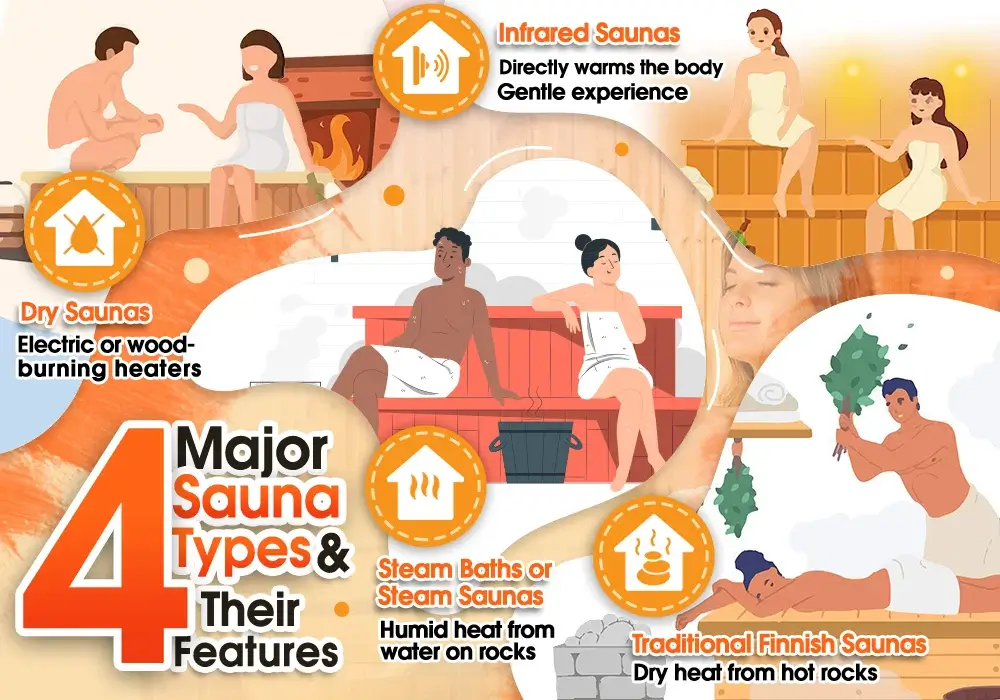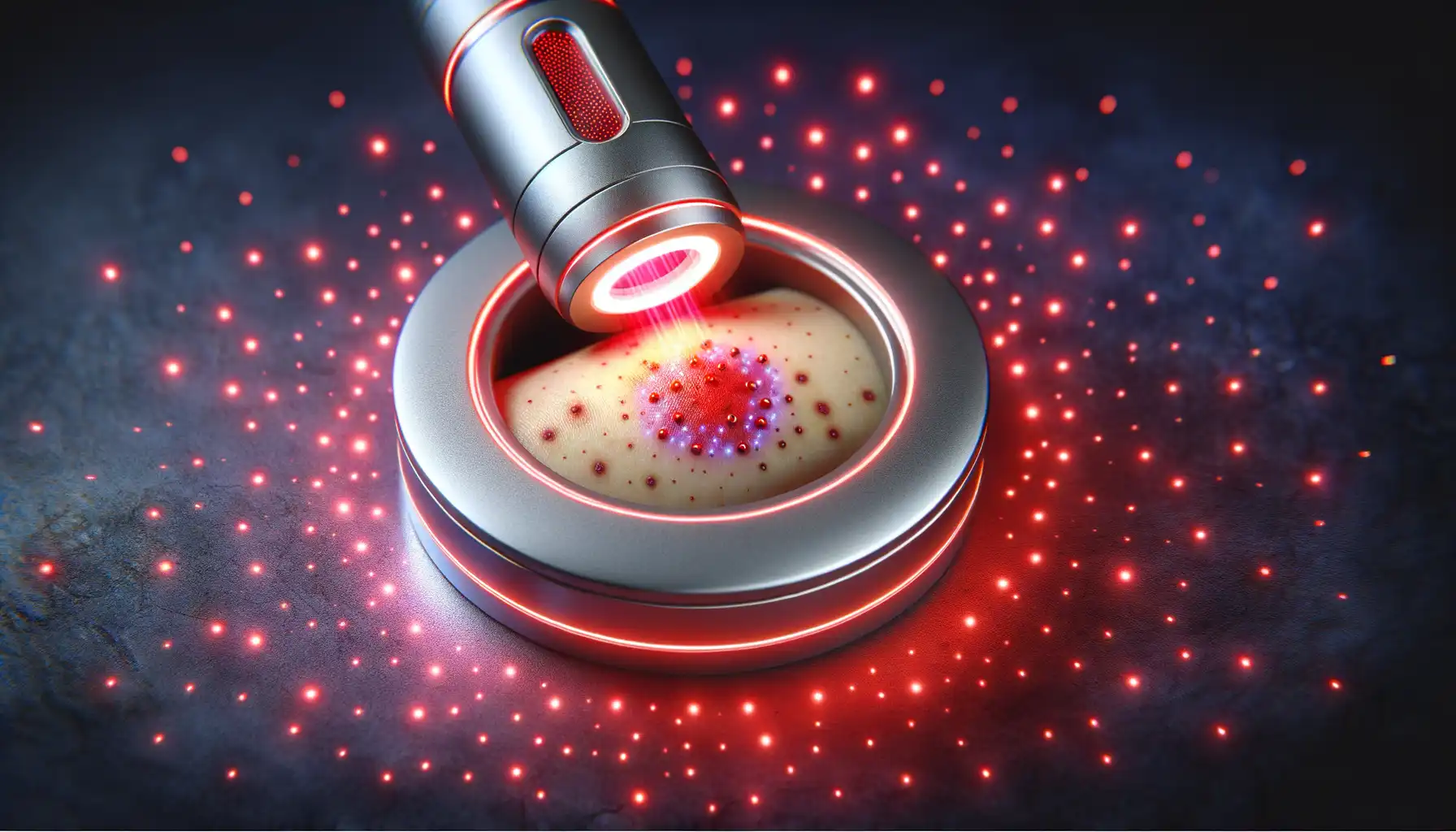This article will explore how infrared saunas might offer support for those managing chronic Lyme symptoms. We'll look at the potential benefits, how to use a sauna safely, and how it can fit into your broader wellness routine.
Understanding the Burden of Lyme Disease
Lyme disease, caused by the bacterium Borrelia burgdorferi, is transmitted through the bite of an infected black-legged tick. The Centers for Disease Control and Prevention (CDC) outlines a range of symptoms that can appear, often starting with fever, headache, fatigue, and a characteristic "bull's-eye" rash.
If not treated early, the infection can spread to the joints, heart, and nervous system, leading to a more complex and persistent set of problems. Many individuals experience what is often called chronic Lyme or Post-Treatment Lyme Disease Syndrome (PTLDS), where symptoms like pain, fatigue, and cognitive issues last for months or even years after initial treatment. Managing this ongoing symptom load is a key part of the healing process.
How Do Infrared Saunas Work?
Unlike traditional saunas that heat the air around you, infrared saunas use specific wavelengths of light to heat your body directly. This allows the heat to penetrate more deeply at lower, more comfortable temperatures. This deep-penetrating heat is what sets it apart and makes it a point of interest for chronic Lyme support.
There are three main types of infrared wavelengths, each with a different level of penetration:
Near-Infrared (NIR): The shortest wavelength, which penetrates just below the skin's surface. It's often associated with skin health and surface-level tissue repair.
Mid-Infrared (MIR): This wavelength can penetrate deeper into soft tissues, where it may help increase circulation and release oxygen to injured areas.
Far-Infrared (FIR): The longest wavelength, which penetrates the deepest. FIR is most known for its ability to raise core body temperature, which induces a deep, detoxifying sweat.
Most full-spectrum infrared saunas on the market use a combination of these three to provide a comprehensive session.
Potential Benefits of Infrared Sauna for Lyme Symptoms
So, how can sitting in a heated box possibly help with something as complex as Lyme disease? The potential benefits are linked to how the body responds to controlled, therapeutic heat. Let's break down some common Lyme symptoms and how infrared heat might offer relief.
Pain, Stiffness, and Inflammation
Joint and muscle pain are hallmark symptoms of Lyme. Infrared heat promotes increased blood flow, which can deliver more oxygen-rich blood to sore muscles and stiff joints. This enhanced circulation can help reduce inflammation and ease the aches that make daily movement difficult. For many, a gentle sauna session feels like a warm, soothing blanket for their entire body, offering temporary but welcome pain relief.
Fatigue and Low Energy
The profound fatigue associated with Lyme can be debilitating. While it may seem counterintuitive, a gentle heat session can sometimes boost energy. By improving circulation and potentially reducing the body's inflammatory load, saunas may help ease the systemic stress that contributes to exhaustion. Furthermore, the relaxation response triggered by a sauna can lead to better, more restorative sleep, which is crucial for fighting fatigue.
Detoxification Support Through Sweating
Our bodies are constantly working to filter out toxins. One of the primary ways we do this is through sweat. Far-infrared saunas are particularly effective at inducing a deep sweat that can help with detoxification. While your liver and kidneys are the main players in detox, some research suggests that sweating can help excrete certain heavy metals and other compounds. For individuals with Lyme, supporting the body's natural detox pathways is often a key part of a comprehensive wellness routine.
Brain Fog and Mood Support
The neurological impact of Lyme can lead to frustrating "brain fog," memory issues, and mood disturbances. The calming effect of a sauna session can help quiet a stressed nervous system. This deep relaxation can lower cortisol levels, reduce feelings of anxiety, and promote a sense of well-being. By calming the body, you can create a better environment for mental clarity.
Starting Safely: A Guide for Beginners
If you're considering adding infrared sauna sessions to your routine, it's essential to start slowly and listen to your body. People with Lyme can be particularly sensitive, so a "low and slow" approach is always best.
Before You Start: Safety First
Consult your healthcare provider before beginning any new therapy, including sauna use. It's not suitable for everyone. People with certain conditions should be especially cautious or avoid saunas altogether. These include:
Pregnancy
Certain cardiovascular conditions
Severe heat intolerance or autonomic nervous system dysfunction (POTS)
Reduced ability to sweat
Neuropathy that impairs your ability to feel heat, which can lead to burns
Your First Sessions: A Gentle Introduction
Start with a lower temperature, around 110–120°F (43–49°C), for a very short duration.
Session Length: Begin with just 5–10 minutes. See how you feel during and after the session.
Frequency: Start with only 1–2 sessions per week. Don't push yourself to do more.
Temperature: Gradually increase the temperature over several weeks as you feel comfortable, perhaps up to 130–140°F (54–60°C). Many find this range effective without being overwhelming.
The Herxheimer Reaction: A Potential Hurdle
When you start any therapy that supports detoxification, you may experience a temporary worsening of symptoms known as a Herxheimer reaction (or "herxing"). This can happen as bacteria die off and release endotoxins, temporarily overwhelming your body's ability to clear them. Symptoms can include increased fatigue, body aches, headache, or chills.
If you experience this after a sauna session, it’s a sign to pull back. Reduce the session time and temperature, or take a few days off. A Herx reaction is a signal that your body needs more support, not that you should push through the discomfort.
Hydration is Non-Negotiable
Sweating depletes your body of water and essential minerals called electrolytes.
Before: Drink a large glass of water before you get in the sauna. Adding a pinch of sea salt or an electrolyte powder can help replenish minerals.
During: Keep water with you and sip it if you feel thirsty.
After: Rehydrate thoroughly with water and electrolytes after your session.
Integrating Sauna Use into Your Lyme Management Plan
An infrared sauna isn't a standalone cure; it's a supportive tool. It works best when integrated into a comprehensive care plan guided by your doctor. This might include:
Medication: Always follow your prescribed treatment plan for the infection.
Nutrition: A nutrient-dense, anti-inflammatory diet provides the building blocks for healing.
Gentle Movement: Activities like stretching, yoga, or walking can complement the circulation-boosting effects of the sauna.
Physical Therapy: If you're working with a physical therapist, sauna sessions can help warm up muscles before gentle stretching.
A Sample Weekly Plan
Here’s what a cautious start might look like:
Monday: 10-minute sauna session at 120°F. Focus on hydration.
Tuesday: Rest day. Monitor how you feel.
Wednesday: Gentle walk or stretching.
Thursday: 12-minute sauna session at 120°F.
Friday: Rest day. Notice any changes in pain or energy levels.
Weekend: Focus on rest, nutrition, and gentle activity.
As you build tolerance, you might slowly increase the duration to 20–30 minutes and the frequency to 3 times per week, always guided by how you feel.
Sauna Quality and Alternatives
If you're considering purchasing a home sauna, look for models made from non-toxic materials (like hemlock or basswood) with low EMF (electromagnetic field) ratings. If a home sauna isn't an option, many wellness centers and gyms now offer sessions.
No access to a sauna? You can create a similar, though less intense, effect at home with a hot Epsom salt bath. The magnesium in Epsom salts can help relax muscles, and the heat will encourage sweating. For more information on the therapeutic use of heat, the National Institutes of Health (NIH) has published research on the physiological effects of whole-body heat therapy.
A Path Toward Feeling Better
Managing the symptoms of Lyme disease is a marathon, not a sprint. It requires patience, persistence, and a multi-faceted approach to healing. Infrared sauna therapy can be a powerful tool for symptom relief, offering a gentle, non-invasive way to reduce pain, support detoxification, and calm your nervous system.
By starting slowly, listening to your body, and working with your healthcare provider, you can safely explore whether this form of heat therapy has a place in your wellness toolkit. Every small step toward feeling better is a victory on the path to reclaiming your health.



